History Blog
|
|
|
|
|
Editor's Note: This account is from the February 23, 1879 New York Times. The tone of the article reflects the time period in which it was written. "A Winter Ramble Over The Surface of the Hudson – Fishing Through The Ice – A Trap for Ice-Yachts – Trying Speed With Thought – Looking Down Upon A Winter Scene Walking on the surface of the deep is no miracle in our climate. But the experience is quite rare enough to make a vivid impression, especially on those who tread habitually the dull sidewalks of a city. For the mind is haunted by at least a feeling of the miraculous as you walk over a great lake or river. The elements seem to have forgotten their laws, and the whole face of nature is weird when her gleaming eyes turn glassy. This unusual view of nature drew me to visit the Winter scenes on the Hudson. I purposed on this Winter walk to go from Poughkeepsie to Newburg on the ice, through the region renowned for ice-boating; where they hold tournaments for lady skaters; where they trot horses when they cannot row regattas; and where Winter life on the ice may seen in its perfection. I started by skating, and I rested from this by sailing, and walking part of the time, for I have a friend on the way who is a famous iceboat skipper; and we skipped about the river with the speed of the wind. I can scarcely call the trip a walk; for I traveled neither all by water nor by land, nor yet as the fowls of the air. But, however I went, the excursion was delightful with scenes and experiences characteristic of the Winter life of the Hudson. As I left the dock at Poughkeepsie and skated out over the river, a thrill – almost a shiver – ran through me as I thought of the depths. But a few inches below my feet. Of course, one is not afraid on ice nearly a foot thick, but this unusual relation to deep wide water is unavoidably startling. You say to yourself there is no danger, but you feel to yourself, this is all very queer. The first minutes of my trip were therefore a little chaotic, with the confidence born of other people’s opinions, yet, with my own secret questioning about the ice all the way down my long route. But the exhilaration of the keen Winter morning soon bore away every other feeling. The thermometer marked only 15 degrees; a light west wind blew down over the hills of Ulster County, and the clear air and sunlight made the most distant scenes appear like faultless miniatures. I looked down the river 20 miles, over my whole route. The river near by was a narrow level valley between high banks of bare trees. The hills over-topping the banks were also brown and bare, excepting here and there a patch of snow or a knoll crowned with cedars that added deep shadows to the sober face of nature. The level valley of ice ran straight away to the distance between dark wooded headlands projecting one behind another, and marking in clear perspective the long vista of the river. The valley seemed to end at the foot of the Highlands, which over-topped the whole scene with their majestic heads, now gray with snow under a bare forest. This long level of ice was generally smooth, excepting here and there, a low wandering ridge of projecting edges and cakes at cracks; and the shores were marked by a tide. Groups of men and boys were seen down the valley, even far off, and a few ice-boats were moving about at Milton, four miles below, and at New-Hamburg, 10 miles off. The mirage was very strong this clear morning, so the boats appeared double, as if one ran on the ice and other under it. The new ice was a curious record of nature in a warm and lenient hour. Jack Frost seemed a tell-tale of his freaks. He had pressed her white flowers; he had preserved her little landscapes modeled in the ice of rivulet, gorge, and bluff; he had caught the wind playing with the ripples and locked them fast, and he had painted the clouds and scattered crystals for the stars. I soon reached Blue Point, where some fishermen were taking up their nets, and a few boys were grouped about them. Two men at each end of a narrow trench cut through the ice, and hauled up a line. These lines at last brought up a net 12 feet square, with a pole across the bottom, weighted with a stone at each end. The nets are lowered her about 50 feet, or half way to the bottom, and 10 to 20 of them are put down in a row across the current, over a reef or rocky point. The upper ends of the lines are tied to sticks that lie across the open trench, or stand up in the ice. The nets swing off under the ice, by the pressure of the current, and fill out like open bags. Catfish run into them, and are kept there by the current until slack water enables them to leave; but perch and bass are caught by the gills in the two-and-a-quarter-inch meshes. When the nets had all been lifted and put down again, the men picked up the few perch and young sturgeons, frozen as stiff as sticks, and walked to the shore. There they had a flat-boat decked over for a house. Bunks, stove, and various fishing-tackle filled the little cabin with a chaotic mass. They will launch their boat when the ice leaves, and float up or down then river as inclination may direct. In good seasons this ice-fishing yields often 50 pounds of fish at a lift, the men make about $10 per day with 20 nets. This year the fishing here is very poor, for the great freshet of the Fall carried the bass down to Haverstraw Bay. I left the fishermen of Blue Point, and skated down the opposite shore. The bluffs along the railroad cuts were hung with great icicles, some of them 8 or 10 feet long. Every projecting ledge of some cliffs, from top to bottom, was decked with these splendid crystals, flashing in the sunlight. And at their feet, the twigs and rocks were covered with round forms of quaint shapes. While I stood there the rails began to ring faintly, but clearly as a bell, in the frosty air. The sounds beat in quick pulsations, grew to a rumbling, then to an increasing roar, and in a moment an express train came around the point at a thundering pace. All the stillness and peace of the morning vanished as before the blast of war. It passed in an instant; the roaring fled; the rails rang again with a clear, pure music, softer, and fainter still, and then the Winter silence came once more over the valley of ice. The solemn repose of the great river was then unbroken. For even its mutterings were solemn, when the ice cracked under my feet with a loud report, and the sound darted away in quick, erratic angles to the bluff, and still rumbled on in persistent gloom. The falls at the Pin Factor were a scene of prettier details. The rocks were covered with pillowy masses of whitish ice, and the clear water came down in zig-zag courses, now over these pillows, now under ice caverns built over rocks. The steep descent of the stream was guarded by rustic balustrades of roots and branches, all covered with ice, and the whole was partly veiled by some bare elms, bushes, and dark cedars. A nearer view of the ice showed it to be a bank of crystal flowers, gleaming faintly with prismatic hues in the sunshine. The water ran all over it in little rivulets perfectly free from earthly stain. The dim caves were the most poetic objects; they had neither a ray of sunshine nor a line of shadow within them; yet their sculptured walls were exquisitely shaded with the softest, clearest lights, and the arch in front was hung with crystals of brilliant colors. The whole fall was full of magic, the faint Winter music of the stream, the exquisite delicacy of forms petrified as in death, and the strangeness of objects that transmit light instead of casting shadows. The only witness of the scene is an old mill with a crumbling wheel that once turned round to the music of the brook. Now when the moonlight shines on his tottering form on the falls in the magic of Winter, and on the wide river groaning in his bed, the scene must be still more weird, if not more beautiful. I went on to Milton, and there found my friend and his ice-boat ready for a cruise further down the river. I put on a few suits of clothes, woolen socks, arctics and mittens; then we embarked, and glided away toward New Hamburg. Other boats were skimming over the ice, and we exchanged many social greetings, if that term can be applied to salutations that begin and end at opposite points of the horizon. I dream of flying when I hold the tiller of an ice-boat, and find myself flitting about the earth, and reaching a place almost as soon as my thought of it. We flew about the Hudson for an hour or more, here turning to visit this point or that, there pausing in our flight to enjoy the excitement of another start, or to touch the social scenes and incidents of this Winter life. At a place near Milton we were admiring a large boat coming from the distance at great speed. Suddenly she stopped. As something was evidently the matter, we ran down there, and found her fast in a hollow that had been filled with water and then skimmed with thin ice. These hollows form by the expansion of the ice. The expansion across the river drives the ice up the shore, so that no cracks form up and down the stream. But the still greater expansion of the long stretches of ice up and down the river find no such room as the shores. The ice, therefore, doubles up, or buckles. It thus either throws up a low ridge, or else forms a hollow, on each side of the cracks running across the stream. The ridge does not interfere much with travel until one side of it drops down and makes a step or fault. But the hollow fills with water, sometimes several feet deep; and at last the tide catches one side of the inclined cakes or sides of the hollow, doubles it under, and carries it away. These clear, open cracks, from 10 to 20 feet wide, are slow to freeze, and generally offer the most dangerous places on the ice. They may form at any time, even in cold weather; so that constant attention and good light are required in raveling up or down the river. But, to return to the stranded ice-boat. She had a good breeze, and had come to this hollow too suddenly to avoid it. If the new ice had been a little stronger, or else narrower, it might have held her up till her forward runners had reached the old ice on the further side of the hollow, and the high wind, with her momentum, would have drive her through. This she would have “jumped a crack,” as the phrase goes; instead of this she “broke through,” as another phrase goes, and her passengers and crew were there surrounded by broken thin ice over a hollow of water in a depression of old ice. Now, we were interested chiefly in the passengers, for they were two very pretty girls, who explained with much animation and distinctness that they would like to get out of that situation. They appeared very well in the midst of rich furs and robes, but for once this advantage was ignored. So we had all the pleasure of their unnecessary distress, and finally landed them, still warm and dry, on the old ice. Then the boat was rescued, and amid many thanks on one side and some merry advice on the other, both parties darted away on the wind. We were afterward favored with pretty salutations from them, too literally en passant, yet too long drawn out for any comfort. Afterward, the same hollow entrapped a second boat; but this had only men aboard and we let them scramble out by themselves. A third boat came up to see what was the matter, and also ran into the trap. Then a fourth came up with a gust of wind, and ran her port runner and the rudder in before she could be rounded to. The water flew, the ice rattled; and it came so suddenly that the whole crew jumped off in a fright. But the whole crew was only one man, and the helmsman stuck to his tiller and brought her out to clear sailing again. At Marlboro we found a crowd of skaters and sliders, collected to witness a horse-race on the ice. They all seemed to be animated with red, red noses. For the wind was keen, and they had to keep in constant motion. Some rosy girls and boys, with scarlet mittens and comforters, were skating hand in hand along the retired nooks of the shores. And some of the farmers from the hills were speeding their horses up and down the straight track on the ice. The village looked down on the scene from the head of its picturesque ravine. Northward, the river stretched away between its bold banks to Poughkeepsie, throwing up a cloud of thin smoke on the Western wind. Southward, the valley of ice ran between still bolder heads of dark cedars, along the sweeps of Low Point, past Newburg, and down to the foot of the Highlands. The gray heads of the mountains were nearer and grander now than when I first saw them from up the river. As the afternoon was passing away, we had to turn our backs on the swarms of boys and men at the horse-race, wave a last farewell to our pretty acquaintances on the ice-boat, and stand away southward. We flew along with a stiff breeze past New-Hamburg, the bold hills at Hampton, and on to other picturesque points. Cracks in the ice here and there made us turn in and out, and flit about with the quick motions of a bird. At last I had to give up the tiller, at the Dantz Kammer Point, shed my various suits down to a walking load, and bid the skipper good by as he flew away up the river. But, after all, give me the sober earth for better or for worse. I enjoyed again the firmness of a good hard road, and the steadfast reality of a good walk down to Newburg. The road gradually mounts the high bank of the river among an army of cedars storming the height, and some farm-houses and orchards in their Winter reserve. At the top of the hill, near Balmville, you look back up the river and over the plains of Dutchess County. Southward the view includes the rolling hills about Newburg and Fishkill, the spires of these pretty towns, and the broad bay between them. The valley of ice contracts there to enter the magnificent gorge of the Highlands, and then disappears behind the shoulders of the mountains. These majestic spirits of the Winter scene are now still grander as you near their feet and gaze at their hoary, silent crowns. The suburbs of Newburg were quite cheerful. Carriages, with spirited horses, and with rosy faces above rich robes, dashed along the roads, and here and there a cozy home-scene shone out of window among evergreens. The town, too, was alive with teams and people from the surrounding country. Winter vigor and high spirits pervaded both man and beast. And I was kin enough to each to share in their joy for the keen Winter day. C.H. F." AuthorThank you to Hudson River Maritime Museum volunteer George Thompson, retired New York University reference librarian, for sharing these glimpses into early life in the Hudson Valley. And to the dedicated museum volunteers who transcribe these articles. If you enjoyed this post and would like to support more history blog content, please make a donation to the Hudson River Maritime Museum or become a member today!
0 Comments
Editor's Note: From the February 20, 2015 New York Times article by Tatiana Schlossberg. http://nyti.ms/1vsvP7x Under Thick Coating, an Icebreaking Ship Uncovers the Hudson HUDSON, N.Y. — As the sun came up on Friday morning, the Sturgeon Bay, a 140-foot Coast Guard icebreaker, creaked and lurched through a frozen river, sending cracks scattering as dark water rose to the surface in pools, spraying beads of water that hit the ice like marbles, solid by the time they landed. From New York Harbor to Albany, the Hudson River wends, ebbs and flows over 120 miles, except when it doesn’t. Right now north of West Point, the river is captive to the wind and weather, a field of ice up to 1.5 feet thick. At least once a day lately, the Sturgeon Bay has been crunching and crashing up and down the Hudson, clearing paths through the crystallized expanse so that boats carrying supplies can reach the communities counting on them. Barges on the Hudson transport 70 percent of the home heating oil in the Northeast. In 2014, barges brought 20 million barrels of it northward, as well as 100,000 tons of dry goods, like salt and cement. It is not exactly news that this winter is cold. But it is very cold. On the once-water in Hudson, N.Y., the temperature floated around 1 or 2 degrees, with a wind chill of minus 20 degrees at times. Lt. Ken Sauerbrunn, the commanding officer of the Sturgeon Bay, said this winter was the worst he had seen since 2004, when Coast Guard boats were dispatched to New York Harbor to clear ice for the Staten Island Ferry. The winter mission of the Coast Guard fleet: break up ice in the Hudson River, the Great Lakes and other waterways throughout the Northeast. All river ice is not all the same. The deepest part of the river, where the cutters make their trail, is frozen with what is called “brash ice,” softer ice that the cutters break up. It refreezes, sometimes as quickly as an hour later, though usually overnight. On either side of the brash ice is “fast ice,” as in fastened to the shore. This is the thicker ice, which, when snow covered, looks like stiff peaked egg whites, flattened out to a wrinkled meringue. When fast ice is broken, sometimes by a boat, sometimes by wind, it breaks into larger, flat chunks, called plate ice. If plate ice is rounded, by bumping into other pieces, boats or by the wind, then it becomes pancake ice. The Coast Guard cutters try not to break too much ice, since it can blow around and pile up in the river. “We always say, ‘The more ice you break, the more you make,’ ” Lieutenant Sauerbrunn, 30, said. This is his second winter captaining the boat; he has been a member of its crew since 2002. His ship, 662 tons with three decks, is specially designed to break ice: The hull has an S-shaped curve from its bow to its keel, which allows it to cut through the mounds; its weight enables it to effectively smash the ice; and its wake is perpendicular to the boat (most boats have a wake that comes out from the stern at 30 degrees), which allows for the greatest amount of ice to be broken. The Coast Guard has nine ships of this size deployed in the Northeast; there are also bigger and smaller cutters. On Friday morning, the Sturgeon Bay and its crew of 17 was headed north when it received a call from two tugboats pushing barges that had gotten stuck in the ice the day before. The cutter turned around, carving a wide loop in the ice with thunderous noise, like 100 people shoveling snow off the sidewalk at once. The two tugboats, the Sassafrass and Fells Point, were a few hundred yards apart, stuck near Germantown, where the ice can pile up because of a narrow bend in the river, making what is known as a choke point. There are a few choke points at the moment: one at West Point, another at Kingston, and this one, at Germantown. The Sturgeon Bay did eight slow laps around the two boats, which took about three and a half hours at the stolid pace of 11.5 miles an hour. Finally enough ice had been cut so the tugboats could break free. The Sturgeon Bay sailed on, loosening up the path of frozen boulders ahead. Most of the ice in New York Harbor has floated down river from this temporary tundra, lodging itself in the curving coves around the harbor’s shores. The water around the city, though, doesn’t freeze over anymore: The salinity of the water lowers the freezing point, and the brisk boat traffic keeps the water moving. (The New York Harbor froze completely in 1780, the hard winter during the American Revolution.) Robin Bell, a research professor at the Lamont-Doherty Observatory at Columbia University who specializes in the Hudson River, said that it also does not get as cold in New York City as it once did. “You used to be able to drive a car from Manhattan to New Jersey,” she said, “so the river was probably colder then, but there was also probably less boat traffic.” As for the future, she said there will probably be less ice in the river, especially around New York City, but it is impossible to predict. There is always the chance that a volcanic eruption in Iceland or elsewhere could cause a brief ice age, she said. Still, the amount of ice that does float downstream is enough to hinder the East River Ferry, the Hudson River Ferry, and the Belford Ferry, which travels from the Sandy Hook Bay in New Jersey to Manhattan, all operated by New York Waterway. Pat Smith, a spokesman for New York Waterway, said it had tugboats out this winter to clear the way for boats. “Whether we send them out depends on the wind and the tides,” he said. The ice does not damage the boats’ hulls, but it can make dings in their propellers, Mr. Smith said. If the propellers become dented, they have to be replaced by a diver. “Would you like to do that this time of year?” Mr. Smith said. The Sturgeon Bay, though, was built for its job. Cutting loops and figure-eights in the ice in its effort to free the Sassafrass, the Sturgeon Bay momentarily scraped to a stop, waiting to see if the tugboat could move. On deck it was hard to remember it was a boat, that this tundra was a river. No water gently lapped against the hull; the boat did not rock with the wind and the waves. Two foxes ran in front of the bow. Everything was cold, white and quiet. If you enjoyed this post and would like to support more history blog content, please make a donation to the Hudson River Maritime Museum or become a member today!
Editor's Note: This article was originally published on December 24, 1946 in The Knickerbocker News, Albany, NY. The tone of the article reflects the time period in which it was written. “Artist’s Picture Keeps Nation Posted on Hudson’s Glories: Lighthouse at Athens, Painted in July, Makes Magazine Yule Cover” By Katherine A. Van Epps Fame of the historic Upper Hudson reached a new high tide today when one of its picturesque landmarks – the lighthouse in mid-river between Athens and the City of Hudson – stepped from the commonplace to the cover of a national magazine. The little lighthouse, since the 1870’s a silent, unsung beacon of safety for the men who ply the fabled waterway and a subject of conversation for generations of excursionists, makes the cover of the Christmas-week issue of Saturday Evening Post. Sharing the national spotlight with the light are its lean, trim keeper, Boatswain’s Mate (lc) Edward Brunner of the U.S. Coast Guard and his family, who posed for the Christmas picture in July. The lighthouse’s claim to fame was assured when Mead Schaeffer, Arlington, Vt., artist, spotted the landmark from the window of a New York Central train approaching Hudson. Through the haze of July heat, Mr. Schaeffer’s artist’s eye saw the red brick lighthouse with spotless white trim as “something that should be under a Christmas tree” (to quote his own description). The idea of putting it on a holiday magazine cover came as he gathered his paints and easel for this unexpected stopover at Hudson. 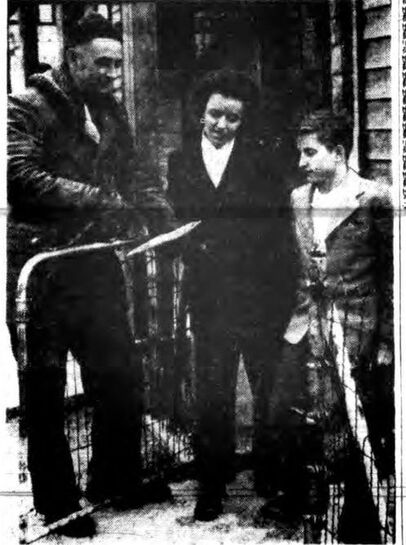 Mr. Brunner, provided by The Knickerbocker News with a preview of the picture painted by Mead Schaeffer, shows it to two of his five children during his visit to Athens where his family lives. In the picture are Emily Brunner, 21, who has just passed final examinations to become a nurse, and Bob Brunner, 14, who was born at the lighthouse. Mr. Brunner's family moved to Athens so the children could attend school regularly. Hurried Gathering of Family The picture, the result of a hurried gathering of the Brunner family, their dog, a fir tree and Christmas packages, shows Mr. Brunner and his son, Norman, rowing toward the lighthouse while the family waits in various poses of welcome. The snow-covered ice floating in the river was produced by Mr. Schaeffer’s imagination. When The Knickerbocker News rounded up Mr. Brunner on a day much like the one Mr. Shaeffer [sic] conjured up last July, with snow falling and ice floating in the black waters, it was found the artist’s imagination didn’t stop with the weather. Mr. Schaeffer had added three children to the Brunner’s family of five and moved the landing stairway from the east to the north side of the lighthouse “to make a better picture.” Mr. Brunner, slow-spoken with the easy humor of a riverman, said he “didn’t mind a bit about the children” but he wondered what the Coast Guard would say about changing the lighthouse. The keeper, veteran of 21 years “on lights,” has been at the lighthouse which straddles the two main Hudson channels just below “The Flats” since 1930. Since his family moved off the river into Athens so the children can get to school, he has kept his 22-hour-a-day, seven-day-a-week vigil alone. As he goes about his work polishing the huge gas beacon or setting the deep-throated fog bell in motion, Mr. Brunner has memories of the days when the lighthouse rang with the laughter of children and the exciting night 14 years ago when his son, Robert, was born and the doctor had to be brought by boat from Hudson. 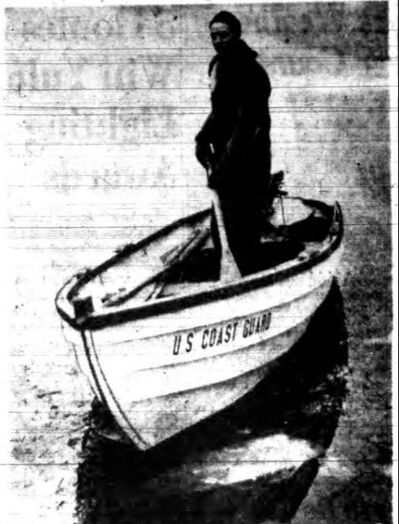 Boatswain's Mate (1c) Edward Brunner of the Coast Guard, keeper of the Hudson City Light since 1930, comes to Athens in his outboard motorboat for which he thinks will be his last visit until the river freezes over so he can walk ashore. Mr. Brunner has a Coast Guard radio on "the light," lhis only contact with the outside world when he is marooned by the floating ice or high water. 13 Years Since . . . It was soon after Robert’s birth that the family moved ashore and now it’s 13 years since Mr. Brunner has been home for Christmas. His home life depends on nature, and by Christmas there’s too much ice in the river for his outboard motor to break through and not enough to support a man’s weight so he can walk home. Older residents of Athens to whom the Hudson is both a source of livelihood and a neighbor tell countless stories about the little lighthouse, known as the Hudson City Light, in the lexicon of the rivermen. To Miss Nellie McKnight, town historian and daughter of a steamboat captain, the lighthouse, rising sheer out of the river, is an old friend. Story of Accident It is Miss McKnight who tells the story of the “Classic Accident of the Hudson,” handed down through her family. The accident occurred during a snowstorm in 1845 when the Hudson City Light was an unattended beacon years before the lighthouse had been built. The sturdy steamer Swallow, headed downstream, was nearing Athens when her captain mistook the lights of the town for the river beacon. He pulled right too soon to enter the channel on the Athens side of The Flats and the Swallow split in two on the rocks and burst into flames. There were 46 persons counted dead when the rescuers arrived – one of the worst tragedies in the history of the Hudson. To Mr. Brunner there’s nothing unusual about the lighthouse achieving nationwide fame. “The Hudson is the most beautiful river in the world,” he will tell you, explaining he saw his share of other lands during foreign service in World War I, “Why shouldn’t it provide inspiration for artists?” he added." If you enjoyed this post and would like to support more history blog content, please make a donation to the Hudson River Maritime Museum or become a member today!
Editor's Note: The following text is a verbatim transcription of an article written by George W. Murdock, for the Kingston (NY) Daily Freeman newspaper in the 1930s. Murdock, a veteran marine engineer, wrote a regular column. Articles transcribed by HRMM volunteer Adam Kaplan. No. 4- The Knickerbocker The 291 foot “Knickerbocker” was a wooden-hull steamer built in 1843 by Smith and Dimon of New York, with her engine made by the West Point Foundry, and originally used in the “DeWitt Clinton.” Daniel Drew, Isaac Newton, and others of the People’s Line, were the owners of the “Knickerbocker” which was considered a very staunch and beautiful craft, plying the waters of the Hudson until 1846 when her owners sent her to the Stonington Line. She saw service on the Long Island Sound line for a number of years and was partially rebuilt for this work, being widened three feet forward of the wheels which were set back into pockets, thus making added stateroom accommodations. Once again the “Knickerbocker” returned to the Hudson river, meeting with various mishaps during her service. On September 1, 1856, the Knickerbocker” sailed from Albany, bound for New York, with 300 passengers and a quantity of freight and livestock aboard. Enroute down the river, the vessel hit a rock, displacing her boiler which caused the vessel to list to the larboard as the cargo and boiler rolled to one side of the craft. The pilot saw the danger and turned the vessel’s bow towards Fort Montgomery creek, three miles north of Peekskill, with the intentions of backing the stricken vessel into shallow water. The steamboat “Niagara” of the opposition line passed by while the “Knickerbocker” was in distress but disregarded all signals for assistance and plowed her way on up the river. The little steamer “Machanic” came to the aid of the “Knickerbocker” and took off 150 of the passengers, with the rest being rescued in small boats and taken to Peekskill. The rescued passengers on board the “Machanic” held a prayer and praise meeting at midnight to give thanks for their deliverance, and then they made up a purse of almost a thousand dollars which they presented to Captain Coe of the “Machanic.” The “Knickerbocker” drifted about with the tide and then sank. She was raised and repaired, and then saw service running in line with the “Hero” of the Merchants Through Line. In 1859 the “Knickerbocker” ran down and sank the sloop “Stephen Raymond” near Hastings. This collision came at night and the entire crew of the sloop perished. During the year 1862 the “Knickerbocker” plied the route between Rondout and New York, taking the place of the steamboat “Manhattan” until the new steamboat “Thomas Cornell” came into existence. This was the last of the “Knickerbocker” in this territory as she was then taken south and used for a troop transport, and later was wrecked on Chesapeake Bay. THE ACCIDENT ON THE HUDSON RIVER -- CORRECTION. There was an error in the report of the collision which occurred on the Hudson river on Monday evening, near Hastings. The steamer which sunk the sloop Stephen Raymond was not the North America, as was supposed, but the Knickerbocker, of the Merchants’ line, and there was only one man drowned instead of three, as reported. Captain Nelson, of the Knickerbocker, says the accident occurred by the sloop changing her course and luffing across the steamer’s bow when too near to prevent a collision. Two persons (Germans) [Editor's Note: Peter Dazel and William Hagan] climbed over the steamer’s bow as the sloop went down. The man at the wheel, named Conklin, could not be found. The two persons rescued proceeded with the steamer to Albany and returned on her yesterday to this city. AuthorGeorge W. Murdock, (b. 1853-d. 1940) was a veteran marine engineer who served on the steamboats "Utica", "Sunnyside", "City of Troy", and "Mary Powell". He also helped dismantle engines in scrapped steamboats in the winter months and later in his career worked as an engineer at the brickyards in Port Ewen. In 1883 he moved to Brooklyn, NY and operated several private yachts. He ended his career working in power houses in the outer boroughs of New York City. His mother Catherine Murdock was the keeper of the Rondout Lighthouse for 50 years. If you enjoyed this post and would like to support more history blog content, please make a donation to the Hudson River Maritime Museum or become a member today!
Ice boating has a long history on the Hudson River, and the Hudson was where ice boating may have started in the United States. Although ice sailing on frozen rivers and canals in Europe dates back to the 17th century, it wasn't until the 1790s that we get our first recorded instance of ice boating on the Hudson River, in Poughkeepsie. A simple wooden box on two runners with a third runner at the back for steering, these sail-rigged boxes with skates were a way for ordinary people to have some wintertime fun, and even occasionally acted as transport vessels for people and small goods. By the mid-19th century, the Hudson River was the center of a huge ice boating (or ice yachting) trend, one that experienced another surge of popularity at the turn of the 20th century. Unlike the early boxes on runners, these new wooden "boats" were simple and elegant - an enormous wooden keel with a wooden cross piece and runners all around. A small platform at the back was for the skipper and any passengers. During races, sometimes the jib man would stand on the cross pieces. This video, filmed in 2014, shows a number of historic "stern steerers" as they are called - because you steer the boat at the stern, or back, with the back ice runner serving as a rudder. Thanks to climate change, the Hudson River doesn't freeze much these days, and when it does it rarely gets thick enough for long enough for ice boating. But that doesn't stop the folks who are keeping the sport alive from trying. You can learn more about the Hudson River Ice Yacht Club by visiting their website. The Hudson River Maritime Museum has a large collection of ice boating materials, including the stern steerers Icicle and Knickerbocker (Jack Frost shown in the video is the sister boat to the Icicle). Icicle was owned by John E. Roosevelt, Teddy Roosevelt's cousin and Franklin Delano Roosevelt's uncle, and the one who got FDR into ice boating. Both ice boats are on display in the museum's East Gallery. If you'd like to learn more about the history of ice boating on the Hudson and about the formation of some of its groups, check out this great article from Hudson Valley Magazine: Explore the History of Ice Yachting in the Hudson Valley. And this winter, if the weather gets cold enough for long enough, take a trip up to Kingston/Rhinecliff or Hudson, NY and see if you can't see folks ice boating off of Astor Point or Tivoli Bay. If you enjoyed this post and would like to support more history blog content, please make a donation to the Hudson River Maritime Museum or become a member today!
Editor's Note: These accounts are from the June 9, 1831 issue of The Evening Post (NY) and the National Gazette (Philadelphia, PA). The tone of the articles reflect the time period in which they were written. June 9, 1831 The Evening Post (NY) General Jackson Boiler explosion – Lives Lost and Saved The morning papers contain a few further particulars concerning the late steamboat disaster on the North River. Two other deaths in consequence of the explosion are to the added to the list which we gave yesterday. The name of one of the unfortunate victims is Mr. Marshall, a passenger, and the other was Mr. Brady, of this city, a carpenter, and a man of much talent and ingenuity. He was exceedingly skillful as an architectural, machine, and ornamental iron work draughtsman. Among the persons severely, but it is hoped not fatally scalded, are Mr. John Glads, of Haverstraw, the bar-keeper of the boat, and Mr. Rathbone, of this city. Mr. Rathbone is a young gentleman of wealth, who was returning to New York from his country seat, on the North River, opposite Grassy Point. At the time of the disastrous explosion he was in the act of stepping on board the steamboat from his own boat. One of his arms was broken, and his leg dreadfully torn and shattered, so much so that amputation has, we learn, since been resorted to. The Journal of Commerce relates the following instance of fortunate escape. A singular circumstance is related to us of another gentleman, well known to the public as a zealous promoter of every good object, who had intended to come down in the same boat [General Jackson]. It appears that he was waiting, either at Peekskill or one of the landing-places lower down, when the Captain of a sloop, which was just getting under way, solicited him very earnestly to take a passage with him. No, he replied; he was waiting for the steamboat. The Captain still pressed the invitation, and withal manifested so much good nature, that the gentleman finally consented. [Money of course was no object with him, being independently rich.] The winds afterwards became less favorable, and he did not arrive in the city till after midnight. He then told his companion that he had been silly enough to go on board a sloop instead of taking the steamboat, and had got well paid for his folly, by being detained till that hour. What was his surprise when he learned that to this circumstance, under Providence, he was probably indebted for the preservation of his life. June 9, 1831 The National Gazette (Philadelphia PA) Steamboat General Jackson’s Boiler Explodes near Grassy Point Dock on June 7, 1831 [From the N. Y. Com. Advertiser of Wednesday.] Steamboat Explosion - The startling intelligence was received last evening, and spread rapidly over the city, that the Steamboat Gen. Jackson had exploded yesterday afternoon, some where in the neighborhood of Sing Sing, and that many lives had been lost. The accounts of this disaster given in the morning papers, are in substantial agreement, and we have selected that of the Mercantile, which is as follows: Another Steamboat Explosion. – The steamboat General Jackson, Capt. Vanderbilt, that has plied daily between this city [New York] and Peekskill, on her passage down burst her boiler with a terrible explosion. The accident occurred about 4 o'clock, while she was lying near Grassy Point Dock, a new landing in Haverstraw bay, about two miles below Stoney Point Light House, and thirty-five miles from the city. Captain Vanderbilt was on shore at the time, assisting in the landing of passengers and merchandize. Such was the force of the explosion that the boiler was blown entirely from its place, and fell in the river between the boat and the dock; a great part of the forward deck was demolished - the bows blown out, and in about 20 minutes, the boat sank, the stern only being visible above the surface of the water. When the accident happened, the steam boat Albany, Capt. Jenkins, on her passage down, was only a few miles from the scene of this terrible catastrophe, and in half an hour thereafter, Captain Jenkins was near enough to send his yawl onshore, to the assistance of the sufferers. Capt. Vanderbilt and six passengers returned to the city in the Albany last evening, and from their report we regret to state, that a man and a boy were killed, and when the Albany left the scene, a black man was on the point of death; about 15 others were wounded, some of them, including the engineer, so seriously that their lives were despaired of. The Gen. Jackson had on board about 40 passengers, but the short period that elapsed between the accident and the departure of the Albany, together with the confusion of the scene, render the particulars thus far received, rather imperfect. Whether any passengers were missing or not, was unascertained; nor did we learn that any cause could be assigned for the fatal explosion. Since the above was prepared, one of the passengers in the Gen. Jackson has called to inform us, that the following persons are already dead; viz: - John Van Tine, Engineer; Oliver Mott, Fireman; - Morris, Waiter; Captain Van Wart, the Pilot; a colored man by the name of Smith, (the Cook;) and one of the hands, also a colored man, who died this morning. This is the second narrow escape of our informant, who was a passenger on board of the Washington, at the time of her late disaster. There was a countryman on board of the Gen. Jackson, who was blown to a considerable height, and fell into the river, where he was picked up with but little injury. He was ascending the gang-way from the cabin, at the time of the explosion; but he says he heard nothing of it, and while supposing himself just stepping on the deck, he was surprised to find people pulling him out of the water. The boat went down in ten minutes from the time of the accident. P. S. Just as we were putting this paper to press, the following list of persons dead, or injured by the explosion, was handed to us, from which it appears that the pilot and engineer of the boat are not dead. Captain Vanwart, pilot, badly scalded; John Vantine, engineer, a fireman, (a colored man) and a deck hand, all very badly scalded; Mr. Marshall, a passenger, dead; John Glass, of Haverstraw, very badly scalded; Miss Dow, dead; Rufus (a waiter) missing; the bar keeper had his legs badly scalded; Mr. Bradley, (architect) of this city, very much mangled, and not expected to recover. The Journal of Commerce says: - The only additional fact which we have learned with certainty in respect to the explosion on board the steam boat Gen. Jackson, is, that among the sufferers is Mr. Rathbone of this city, a gentleman of wealth, whose country seat is nearly opposite Grassy Point, where the accident happened. His leg is dreadfully torn, the cords being all separated above the knee, and one of his arms broken. June 10, 1831 The National Gazette (Philadelphia PA); Further Details about the Explosion on the General Jackson New York, June 9 Further particulars of the late Steamboat Disaster. By the North America steamer last evening, the following additional particulars of the late melancholy disaster of the General Jackson, were received by the morning papers, from which it will be seen that the dead and wounded are more numerous than we had hoped, or than was first reported. "In the [steamer] North America, (says the Mercantile,) the dead bodies of John Vantine, Engineer, Josiah R. Brady, architect, and Miss Dow, were brought to this city. John Glass, Esq. calico printer from Glasgow, who settled in Haverstraw a few years ago, and Mr. Mitchell, of Peekskill, are dead; and two it is said died while they were being conveyed to Poughkeepsie. Rufus, a waiter, is missing - as well as three or four others. Fourteen are badly bruised or scalded, of whom not more than three are expected to recover - among them are Mr. Edward B. Rathbone, merchant, of this city, whose arm was broken, and whose left leg was terribly shattered. Dr. Proudfoot, who was on tho spot, set the former immediately, and yesterday, amputated the latter, but Mr. Rathbone is in a very precarious situation. Smith, the cook; capt. Van Wart, the pilot; the barkeeper, the fireman, a colored man, and a deck hand, are severely scalded and not expected to survive - these are all the names that have come to our knowledge. The General Jackson is a complete wreck; save the deck, scarcely one plank remaining to another." The remains of Mr. Vantine have been taken to New Brunswick for interment. Mr. Van Wart was not dead last evening, but was not expected to live through the night. Mr. Glass was found after the explosion, suspended by his neck-handkerchief - dead. Dr. Proudfoot was conversing with Brady, at the time the latter was injured, and was himself unharmed. The number of the dead is thus summed up: Five died at Grassy Point; two died on their way to Poughkeepsie; two no doubt were carried down in the vessel, as they were distinctly heard halloing for help, and how many more is not known. [Final death toll turned out to be 14 people.] AuthorThank you to Hudson River Maritime Museum volunteer Carl Mayer for sharing and transcribing these articles and for the glimpse into nineteenth century life in the Hudson Valley. If you enjoyed this post and would like to support more history blog content, please make a donation to the Hudson River Maritime Museum or become a member today!
Editor’s Note: The following text is a verbatim transcription of an article featuring stories by Captain William O. Benson (1911-1986). Beginning in 1971, Benson, a retired tugboat captain, reminisced about his 40 years on the Hudson River in a regular column for the Kingston (NY) Freeman’s Sunday Tempo magazine. Captain Benson's articles were compiled and transcribed by HRMM volunteer Carl Mayer. See more of Captain Benson’s articles here. This article was originally published August 17, 1975. On a tugboat, the one member of the crew that seems to have more than its share of "characters" is the cook. Cooks come in all shapes, sizes and degrees of ability. When they are good, they’re worth their weight in gold. When they are not, about the only thing you can say is they cook food. One time when I was pilot of the tugboat Lion of the Cornell Steamboat Company, we had a cook who was what is known among boatmen as a “sea lawyer.’’ He was the world’s greatest expert on any subject. He was forever holding forth on one topic or another and always in an exceptionally loud voice. My room on the Lion at that time was just ahead of the galley with a very thin partition between. If anyone spoke in a loud voice in the galley it would seem it was right in the same room with you. One morning the cook was arguing with someone about something and, as usual, at the top of his voice. It was about 8 a.m. and I had been in my bunk for less than an hour, as I had been up from midnight until 6 a.m. steering my watch. I told him to pipe down. But the next morning it was the same thing. This time I didn’t say anything, but thought there must be some way to muffle this man’s voice. A morning or two later we had a tow on the upper river and about 2 a.m. I blew to the deckhand to come up in the pilot house to steer while I had a cup of coffee. After I had the coffee, I went to the cook’s room and, disguising my voice, called him. The cook in a sleepy voice said, “O.K. O.K.” Apparently, as I thought would be the case, he never bothered to look at the clock. I went back up to the pilot house and kept the deckhand engaged in conversation there. About 45 minutes later, the deckhand said, "I smell bacon frying." I said, “So do I." When the deckhand went into the galley, there was the cook making oatmeal, french toast, coffee and frying bacon. The deckhand said, ‘‘What in the devil are you doing up? Its only 3 a.m." The cook replied, “You called me didn’t you?” Then, for the first time looking at the clock, he said, "I know, that so and so Benson did that because I woke him up the past couple of mornings.” After that, if anyone talked loud in the galley, the cook would practically whisper, “Talk low. Benson will blame me for waking him up and then he’ll get me up about 2 or 3 a.m. again.” At least, for several weeks afterward, I was able to get my sleep undisturbed. In all honesty, I have to also admit that the pleasant aroma of frying bacon and brewing coffee wafting up through the open windows of the pilot house in the stillness of the early morning wasn’t bad either. AuthorCaptain William Odell Benson was a life-long resident of Sleightsburgh, N.Y., where he was born on March 17, 1911, the son of the late Albert and Ida Olson Benson. He served as captain of Callanan Company tugs including Peter Callanan, and Callanan No. 1 and was an early member of the Hudson River Maritime Museum. He retained, and shared, lifelong memories of incidents and anecdotes along the Hudson River. If you enjoyed this post and would like to support more history blog content, please make a donation to the Hudson River Maritime Museum or become a member today!
Looking for holiday gifts? Need to build up your reading list for colder weather? We're listing some of our favorite Hudson River history books plus some new releases to tide you over until spring. All of the following links to go Amazon. Just click on the book image or title to purchase. If you'd like to give the museum some extra support, shop at smile.amazon.com and select the Hudson River Maritime Museum as your charity. We'll get a small percentage of your purchase. Some of these books are also available in our museum store, so stop by to purchase in person! And as always, we have a large selection of rare and out of print maritime books in the store, perfect for browsing. Hudson River Classics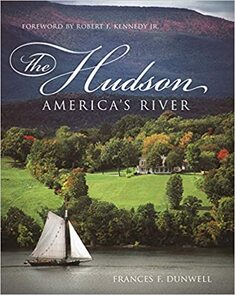 The Hudson: America's River by Frances F. Dunwell Fran Dunwell offers up a beautifully illustrated history of the Hudson River with this coffee table book. In particular, Dunwell frames the Hudson River and its importance in New York State and national history.  The Hudson: A History by Tom Lewis This somewhat scholarly book nevertheless provides an excellent overview of the Hudson River, from First Contact through the twentieth century. 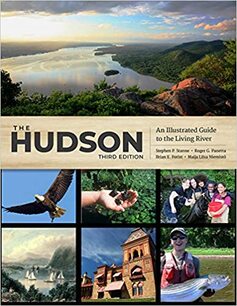 The Hudson: An Illustrated Guide to the Living River by Stephen P. Stanne with Roger G. Panetta, Brian E. Forist, and Maija Liisa Niemisto The third edition of this classic book will be released in January, 2021, but you can pre-order before the holidays. Containing information about the Hudson's wildlife, flora, and environmental history, The Hudson: An Illustrated Guide to the Living River is essential reading for any Hudson River enthusiast. 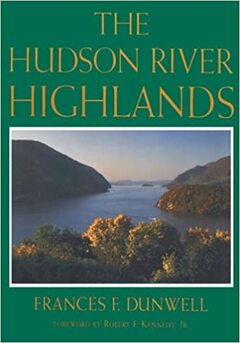 The Hudson River Highlands by Frances F. Dunwell This classic text has kept its relevance. The museum consulted it for our RiverWise journey through the Highlands just this year! With chapters on everything from geology to the American Revolution, Dunwell's book is an engaging and interesting read. New Publications (2018-2020)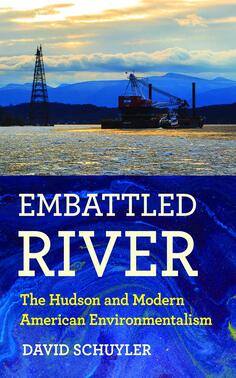 Embattled River: The Hudson and Modern American Environmentalism by David Schuyler (2018, paperback 2020) Newly out in paperback, Embattled River tells the story of the Hudson River and its role in the formation of the environmental movement in America. The museum consulted this book as part of its Rescuing the River exhibit. Sadly, David Schuyler passed away suddenly in July, 2020. We are grateful for his work and he will be missed.  In the Shadow of Genius: The Brooklyn Bridge and Its Creators by Barbara G. Mensch (2018) Part coffee table book, part history, Barbara G. Mensch combines decades of her photography with archival images of the construction of the Brooklyn Bridge. Weaving together her personal experience of living in the shadow of the bridge with the lives of John and Emily Roebling, In the Shadow of Genius makes for fascinating reading - and looking. 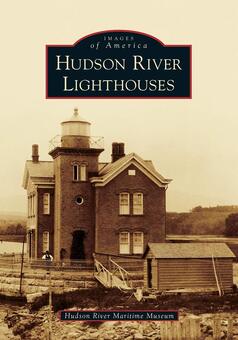 Hudson River Lighthouses by the Hudson River Maritime Museum (2019) Written by the Hudson River Maritime Museum, Hudson River Lighthouses chronicles all of the Hudson River's historic lighthouses, from Troy, NY to New York Harbor. Includes information about lost lighthouses and early manned navigational lights. Also available for purchase in the Hudson River Maritime Museum store. All proceeds benefit HRMM. 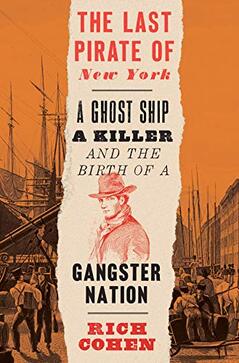 The Last Pirate of New York: A Ghost Ship, a Killer, and the Birth of a Gangster Nation by Rich Cohen (2019) An engrossing history of the life and times of Albert Hicks, infamously known as the "last pirate of New York," for his prosecution and execution for piracy in 1860. Rich Cohen links Hicks to the rise of gangsterism in New York City in the latter half of the 19th century.  The Kidnapping Club: Wall Street, Slavery, and Resistance on the Eve of the Civil War by Jonathan Daniel Wells (2020) Although gradual manumission was implemented in New York starting in 1799, the story of slavery in the state doesn't end there. In this new book, historian Jonathan Daniel Wells chronicles the New York City officials who sought to circumvent antislavery laws from the 1830s to "the eve of the Civil War" and the small group of dedicated abolitionists who fought to stop them. 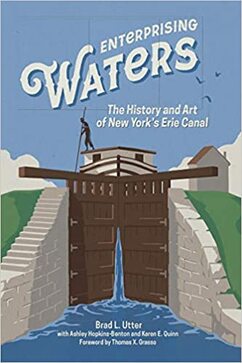 Enterprising Waters: The History and Art of New York's Erie Canal by Brad L. Utter (2020) The companion publication to the New York State Museum exhibition by the same name, Enterprising Waters chronicles the history of the Erie Canal in New York State.  The Hudson Valley: The First 250 Million Years: A Mostly Chronological and Occasionally Personal History by David Levine (2020) Journalist David Levine covers all 250 million years of Hudson Valley history (or thereabouts) in a series of short historical (and often humorous) essays, on topics from dinosaurs to the present. 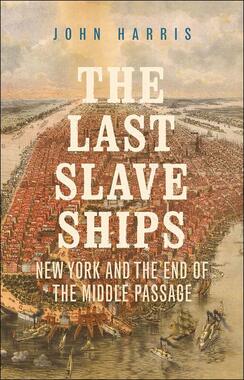 The Last Slave Ships: New York and the End of the Middle Passage by John Harris (2020) Published on November 24, 2020, this brand new history chronicles the role of New York City - particularly lower Manhattan - in the illegal slave trade. Harris outlines how the U.S. government turned a blind eye and even aided enslavers in their efforts, despite the illegality of the importation of enslaved Africans at the time. Especially for Kids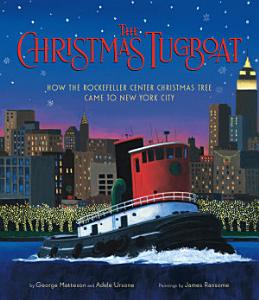 The Christmas Tugboat: How the Rockefeller Center Christmas Tree Came to New York City by George Matteson. This delightful children's book tells the story of real-life tugboat captain George Matteson and his daughter as they make their way down the Hudson River with the Rockefeller Center Christmas tree in tow. 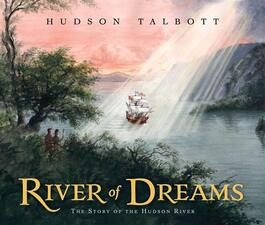 River of Dreams: The Story of the Hudson River by Hudson Talbott. This beautifully illustrated children's book chronicles the history of the Hudson River from pre-contact Indigenous history all the way through the exciting 19th century, as told through the dreams of a boy named Hudson. 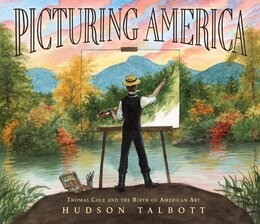 Picturing America: Thomas Cole and the Birth of American Art by Hudson Talbott In his follow-up to River of Dreams, Talbott chronicles the life of Thomas Cole and his relationship to the Catskills in this beautifully illustrated book about the birth of the Hudson River School of Art. More to come in 2021!There are a number of fascinating new history books being published in 2021, so keep your eyes peeled for another post with that list. In the meantime, Happy Holidays and happy reading! If you enjoyed this post and would like to support more history blog content, please make a donation to the Hudson River Maritime Museum or become a member today!
Editor's Note: The following text is a verbatim transcription of an article written by George W. Murdock, for the Kingston (NY) Daily Freeman newspaper in the 1930s. Murdock, a veteran marine engineer, wrote a regular column. Articles transcribed by HRMM volunteer Adam Kaplan. No. 107- Highlander Almost from the day she slid down the ways into the water the “Highlander” was a part of the contests between steamboats for the honor of being the fastest and most efficient vessel on a particular route on the river. Later, after her days as a passenger vessel gave way to the era of more modern craft, the “Highlander” was converted into a towboat and continued her useful career on the river up which Henry Hudson’s “Half Moon” sailed centuries before in quest of a route to India. The wooden hull of the “Highlander” was constructed at New York in the year 1835 by Lawrence and Sneden. The length of her keel was 160 feet, with an overall length of 175 feet, and her beam measured 24 feet wide, her hold eight feet deep. Her engine was the product of the West Point Foundry, being of the vertical beam type with cylinder diameter of 41 inches with a 10-foot stroke. Two iron boilers were located on her guards, and her paddle wheels were 24 feet in diameter with buckets 10 feet long and a dip of 29 inches. She was rated at 313 tons. The “Highlander” was built for Thomas Powell, Samuel Johnson, and Robert Wordrop, for use on the Hudson river, and she was one of the finest and fastest steamboats of that period. While the “Highlander” was under construction at New York, another steamboat, the “James Madison,” was being built at Philadelphia to run in opposition to the “Highlander” on the Newburgh and New York route. The ensuing contests between these two vessels were frequent, and both steamboats claimed a share of the honors. The pages of Hudson river steamboat history are marred considerably by the disasters caused by contests between steamboats when overtaxed boilers exploded and fire swept vessels from stem to stern, but these records fail to shed light on any accidents that resulted from the rivalry of the “Highlander” and the “James Madison.” The “James Madison” was finally placed in service between Albany and New York and her name changed to the “Oneida”- thus bringing to an end the contests with the “Highlander.” The “Highlander” continued operating on the Newburgh and New York route until 1846 when the steamboat “Thomas Powell,” a new and faster vessel, made her appearance. She was next seen as an excursion steamboat, and later she appeared on the Rondout and New York route, as a passenger vessel. In 1851 Thomas Cornell purchased the “Oneida” and changed her name back to the “James Madison,” and during this period both the “Highlander” and the “James Madison” were converted into towboats. In 1852 the “Highlander” and the “James Madison” were towing out of the Rondout creek to New York- the “James Madison” in the service of the Delaware and Hudson Canal Company and the “Highlander” for the Pennsylvania Coal Company from the Port Ewen docks. Following the season of 1852 the “Highlander” was taken to the Delaware river where she was used as a towboat until 1866 when she was dismantled and her engine installed in a new towboat, the “William H. Aspinwall.” AuthorGeorge W. Murdock, (b. 1853-d. 1940) was a veteran marine engineer who served on the steamboats "Utica", "Sunnyside", "City of Troy", and "Mary Powell". He also helped dismantle engines in scrapped steamboats in the winter months and later in his career worked as an engineer at the brickyards in Port Ewen. In 1883 he moved to Brooklyn, NY and operated several private yachts. He ended his career working in power houses in the outer boroughs of New York City. His mother Catherine Murdock was the keeper of the Rondout Lighthouse for 50 years. If you enjoyed this post and would like to support more history blog content, please make a donation to the Hudson River Maritime Museum or become a member today!
Editor's Note: This article was originally published on September 15, 1897 in the New York Times. The tone of the article reflects the time period in which it was written. COLLISION IN MIDSTREAM Steamboat Catskill Sunk by the Steamboat St. Johns in the North River. THREE PASSENGERS MISSING Capt. Cooper of the Catskill Explains How He Signaled the St. Johns and How the Collision Occurred. The steamer Catskill, Capt. Joel Cooper, bound for Catskill and way points with forty-seven passengers and freight, was run down and sunk in the North River at 7 o'clock P. M. yesterday by the excursion steamer St. Johns, Capt. Jacob Braisted, of the Sandy Hook Line. Bertie Timmerman, the six-year-old son of Moses Timmerman, of Leeds, N. Y., was seen to jump from the Catskill, and is reported as being drowned. Mrs. Maria McDonald and Mrs. Susan Morris of Guttenberg, N. J. were unaccounted for last night after the rest of the passengers had been taken from the sinking vessel. Leonard R. Miller of 343 Garden Street, Hoboken, had his leg broken and was thrown overboard in the collision, but was picked up by a tug. Met in Mid Stream. The steamers met in midstream, when the sun was yet hardly below the horizon, and every craft afloat on the river was visible from either shore. The prow of the St. Johns crashed into the starboard side of the Catskill near the bow, cutting its way several feet into her and sending all of the deck structures amidships down to the decks. As the water rushed into the Catskill the wildest panic prevailed among her passengers, as they struggled and fought for life preservers. Four of the passengers, including the boy Timmerman, jumped overboard, and one was thrown over by the force of the shock. Many were dashed to the deck and stunned or bruised. The collision occurred at a point in the river between Fifty-seventh and Fifty-eighth Streets, and was witnessed by many people on both shores. Within a minute after the collision there was a swarm of all kinds of craft heading from all directions to aid in the rescue of the passengers. The Catskill remained afloat about five minutes, and in that time she was cleared of her passengers and towed a short distance toward the Jersey shore, where she went down with her smokestack marking the place where she rested. Statements of Passengers. From the statements of rescued passengers it appears that the collision was the result of a misunderstanding of the signals passed between the pilots of the vessels. The only alternative is that one of the engineers misunderstood his orders from the pilot. The St. Johns was returning to her pier, at the foot of Rector Street, with a party of excursionists. The Catskill left her pier, at the foot of Christopher Street, at 6:30 P. M. with a large freight load. The former is an iron sidewheel steamer, and was built at Wilmington, Del., in 1873. She is of 1,098 gross tonnage and is 250 feet in length and 30 feet beam. The Catskill is owned in Albany, and was built in Mystic Bridge, Conn., in 1863. She is a wooden sidewheel Steamer of 816 gross tons, and is 226 feet long, with a beam of 28 feet 6 inches. The St. Johns was apparently not greatly injured by the collision, and her Captain held her in the stream near by until the tugs and small boats that answered the call from his whistles had done all that could be done in the way of rescue. Her passengers were as wildly excited as those aboard the Catskill. They were landed on the New Jersey side within a few minutes after the Catskill foundered. The Missing Boy. The boy, Timmerman, who is supposed to have been drowned, was in charge of Miss Nellie McCree of 451 Union Street and George Cook of 52 First Street, Brooklyn. Miss McCree was landed with Cook at Fifty-ninth Street last night. They went to the West Forty-seventh Street Police Station to await there any news that might be heard of the boy. Miss McCree said last night to a reporter that she was sitting on the fore deck with Cook and the boy at the time of the crash. She was thrown to the deck, and the boy was lost in the excitement that followed. She and Cook searched for him quickly, and then got life preservers from their state rooms. They were rescued by one of the tugs. Cook said that no one had any intimation of danger until the shock of the collision was felt. He and Miss McCree heard the Catskill’s whistles, but did not remember hearing the St. John’s. They saw the big excursion steamer coming toward them, but had no fear of being run down, as she had been sighted when far up the river, and the courses of both vessels were seemingly clear. Swam with a Broken Leg. Leonard R. Miller, whose leg was broken, was landed at Fifty-ninth Street and sent to Roosevelt Hospital. He said: “I was standing by the railing on the port side when the collision occurred. I was thrown over the failing, breaking my leg and landing in the river. I kept my senses and was swimming in a crippled way alongside when I saw a boy about six years old jump into the water near me. He came to the surface for few moments and then went down. I watched for him, but did not see him come up again. I think that he was drowned." Miller is a retired engineer, and was on his way to visit relatives in Germantown. D. G. Beers of Catskill saw Miller go overboard, and got aboard the first tug to get alongside of the Catskill. He threw Miller a rope and pulled him out of the water. He said last night that he was eating supper when the steamers ran into each other. The passengers ran from place to place on the boat, screaming and fighting for the life preservers. Every one was panic stricken, and there was no semblance of order anywhere. At the Fifty-ninth Street pier, where several of the passengers of the Catskill were landed, a young woman, who refused to give her name, was in an almost hysterical state. She reported that Mrs. McDonald and Mrs. Morris were drowned. She said that they were her friends, and that she was with them at the time of the collision. Mrs. McDonald, she said, was seventy-five yeas old, and helpless. The reserves of the West Forty-seventh Street and the West Sixty-eighth Street Stations were called to the pier at Fifty-ninth Street, where the first information of the accident was received. Three ambulances from Bellevue and two from Roosevelt were also called. ON BOARD THE ST. JOHNS. All Information Refused by the Officers and Crew. At Pier 8 North River it was learned last night that the St. Johns had aboard excursionists from the vicinity of Allentown, Penn. They arrived at Communipaw in in the morning on a three -section train, composed of thirty cars, there being in all about 1,700 [1000 according to most other papers] passengers. They embarked on the St. Johns at Communipaw, and proceeded thence to Newburg. The St. Johns, after the collision, went to Communipaw, where the excursionists were landed at about 8 P. M., and they immediately boarded trains for home. The St. Johns subsequently went to her berth, on the north side of Pier 8 N. R., foot of Rector Street, where reporters boarded her. Capt. Braisted could not be found, the other officers and deckhands scurried out of sight at the approach of the reporters. No one could be found who would say a word about the collision. A clerk on the pier said: "I have instructions to send anyone making inquiries to the office in Communipaw." A trip to Communipaw failed to disclose that there were any offices open or that there was anyone there authorized to speak. The St. Johns did not escape injury. All of the joiner work above the main deck on the port bow was smashed in, windows were shattered, and the rail of the upper deck, with its lattice ropework, hung dangling down to the water. The plates of the hull on either side of the stern were dented and scarred and the paint scratched, but there were no punctures and no injury below the water line. CAPT. COOPER’S STATEMENT. The tug Crosby, Capt. James Relyea, of the Cornell Towing Line brought the crew of the Catskill to the company’s dock at the foot of West Tenth Street. Many of them were wet, as they either jumped off or had to swim away when the water reached the upper decks. Capt. Joel Cooper of the Catskill said that there were forty passengers aboard, and he believed that they had all been saved. When asked how accident had happened, Capt. Cooper said that the boat usually started at o'clock in the evening. There had been considerable delay last evening, and the Catskill did not start until nearly 6:50 o'clock. When the boat was about off Sixtieth Street he saw the steamer St. Johns bearing down, and blew two whistles to indicate that he was going to starboard. The St. Johns replied with one whistle, indicating that she would go to port. The Catskill turned to starboard, but the St. Johns did not deviate from her course. "When she came close on,” continued Capt. Cooper, “I gave three whistles, indicating danger, and at the same time rang to stop the engines and to back hard. My orders were carried out promptly, but it was already too late, and the St. Johns came crashing into the forward part of the boat on the starboard side, tearing a tremendous hole.’’ "Then the St. Johns backed off and crashed against the wheelhouse of the Catskill, but I do not know how much damage she did there. She, however, came alongside of us and stood by us, and several of our passengers jumped on board of her." When asked what explanation the Captain of the St. Johns had made to him for running into the Catskill, Capt. Cooper said that he did not see him to speak to him. Chief Engineer Shufelt of the Catskill said that he and Assistant Engineer Young and two of the hands, Pullman Baker and Chittenden, were in the engine room, and the boat was going at the usual speed when he suddenly got the order to stop and back. He did so, and the boat was already backing when he felt a shock that made the boat shiver all through, and the next second he heard a rush of water. He and his men stood at their posts until the water came pouring into the engine room, and they got the order to go, for the boat was rapidly sinking. When they reached the upper deck the water was already after them, and they had to swim away. Engineer Shufelt was of the opinion that it did not take more than seven minutes from the time that the Catskill was struck until she was going down, and other members of the crew said it took between seven and ten minutes for her to sink. Assistant Engineer Young corroborated Chief Engineer Shufelt’s statement. When they reached the upper deck from which they had to swim, three tugs of the New York Central Railroad and another tug of the Cornell Towing Company came hurrying up and picked up the passengers and crew. The St. Johns, they said, did not lower any of her boats to save any lives, but lay by apparently doing nothing. The electrician of the Catskill said he was on the after deck at the time. The water seemed to overwhelm the boat immediately after the shock. He remained there for a few minutes until the electric lights went out, and then he hurried up stairs. AuthorThank you to Hudson River Maritime Museum volunteer Carl Mayer for sharing and transcribing this article and for the glimpse into nineteenth century life in the Hudson Valley. If you enjoyed this post and would like to support more history blog content, please make a donation to the Hudson River Maritime Museum or become a member today!
|
AuthorThis blog is written by Hudson River Maritime Museum staff, volunteers and guest contributors. Archives
July 2024
Categories
All
|
|
GET IN TOUCH
Hudson River Maritime Museum
50 Rondout Landing Kingston, NY 12401 845-338-0071 [email protected] Contact Us |
GET INVOLVED |
stay connected |
